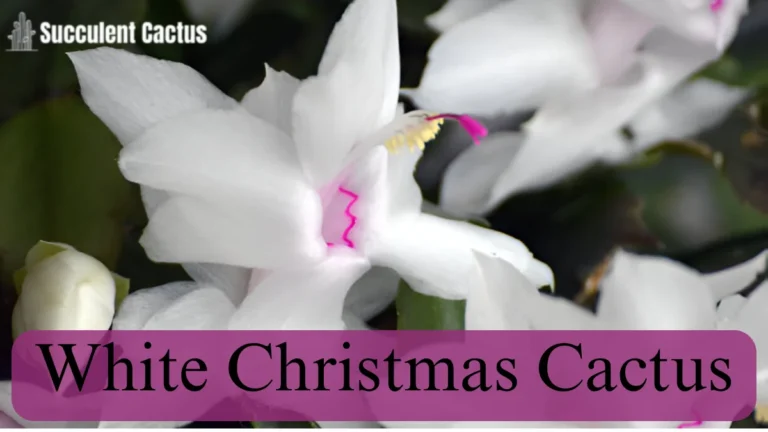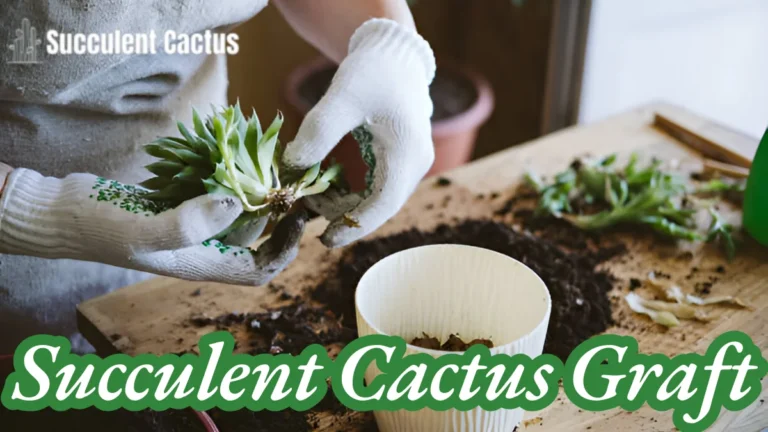The Complete Guide to Using Succulent Cactus Rocks

Succulent cactus rocks are an essential component for enhancing plant health and design in indoor and outdoor arrangements. Whether you’re looking to create a beautiful succulent garden, prevent overwatering, or mimic the natural habitat of your plants, rocks play a critical role. This comprehensive guide delves into their importance, types, preparation, and creative uses.
What Are Succulent Cactus Rocks?
The Purpose of Succulent Cactus Rocks
Succulent cactus rocks serve as decorative and functional elements in gardening. These rocks are often used as top dressing or drainage layers in pots and landscapes to replicate the natural arid habitats where succulents and cacti thrive.
Top dressing rocks improve the overall aesthetic appeal of a succulent arrangement by covering exposed soil and creating a polished look. More importantly, rocks prevent waterlogging by aiding drainage. In regions where succulents are grown indoors, rocks provide the stability and structure plants need to remain upright and healthy.
Succulent cactus rocks aren’t just for aesthetics. They create a microclimate by regulating soil moisture levels, protecting roots, and discouraging the growth of weeds.
Types of Rocks Commonly Used
Succulent enthusiasts use different types of rocks depending on the intended purpose. Here’s a breakdown:
- Gravel: These small stones are commonly used as top dressing for decorative purposes.
- Pumice: A porous volcanic rock ideal for improving drainage and aeration.
- River Stones: Smooth, polished rocks perfect for giving your arrangements a natural look.
- Lava Rock: Lightweight and porous, it improves drainage while also serving as a striking decorative element.
Each rock type offers unique advantages. For example, pumice improves root health by preventing soil compaction, while gravel stabilizes soil and reduces evaporation.
Benefits of Adding Rocks to Succulent Cactus Arrangements
Adding rocks to succulent and cactus arrangements benefits both aesthetics and plant health. Some key benefits include:
- Enhanced Drainage: Rocks prevent water from pooling around the roots, reducing the risk of rot.
- Aesthetic Appeal: Decorative rocks elevate the visual appeal of your garden or pot.
- Stabilized Soil: Rocks keep soil in place, particularly in outdoor or sloped gardens.
- Weed Control: Rocks act as a barrier to prevent weeds from sprouting in your pots or gardens.
Rocks also make your arrangements more durable by keeping soil from shifting due to watering or wind.
Why Succulent Cacti Need Rocks
Mimicking the Natural Habitat
Succulents and cacti naturally grow in arid, rocky environments where soil drainage is excellent. Adding rocks to your arrangements allows you to replicate these natural conditions, which are critical for their survival. Rocks mimic the loose, well-draining soils of deserts and semi-arid regions.
Succulents that grow in nature are often surrounded by gravel and stones that anchor them in place and reduce moisture retention in the soil. Replicating these conditions indoors ensures your plants thrive.
Preventing Overwatering
Overwatering is a leading cause of succulent and cactus death, especially for indoor plants. Rocks help manage this issue in several ways:
- They improve drainage by directing excess water away from the roots.
- Rocks used as top dressing reduce soil compaction, keeping it loose and breathable.
- They act as a visual indicator of water levels—when the rocks are dry, it’s a sign the plant needs watering.
By reducing water retention, rocks minimize the risk of root rot and fungal infections.
Temperature Regulation
Rocks are excellent for regulating temperature, especially in outdoor arrangements. During hot days, rocks shield the soil from direct sunlight, preventing it from overheating. In cooler temperatures, rocks trap heat, helping maintain consistent warmth for the roots.
This ability to moderate temperature benefits succulents and cacti grown in variable climates.
Types of Succulent Cactus Rocks
Gravel
Gravel is one of the most versatile and widely used rocks for succulents. These small stones are available in a variety of colors, sizes, and textures. Here’s why gravel is so popular:
- Improves Drainage: Gravel prevents water from pooling in the soil.
- Prevents Soil Erosion: It stabilizes the soil, especially in outdoor arrangements.
- Aesthetic Value: Decorative gravel adds a polished finish to your pots or gardens.
Gravel is particularly useful as a top dressing, providing both functionality and visual appeal.
Pumice
Pumice is a lightweight volcanic rock known for its porosity. It’s a favorite among succulent growers for these reasons:
- Aerates Soil: Pumice prevents soil from becoming compacted.
- Improves Drainage: Its porous nature ensures water drains effectively.
- Neutral pH: Pumice doesn’t alter the soil’s pH, making it safe for sensitive plants.
Unlike decorative rocks, pumice is often mixed into the soil rather than used as a top layer.
Lava Rock
Lava rock is another popular choice for succulents and cacti. Its dark color creates a striking contrast with green succulents. Benefits include:
- Lightweight: Despite its size, lava rock is easy to handle.
- Enhances Drainage: The porous structure allows for excellent water flow.
- Natural Look: It adds an organic, rugged feel to arrangements.
Lava rock is often used in outdoor succulent gardens or larger planters.
How to Choose the Right Rocks for Your Succulents
Size and Texture
The size and texture of your rocks matter. Smaller rocks like pea gravel are ideal for top dressing, while larger stones work best for drainage or outdoor landscaping. Ensure rocks aren’t too sharp, as they can damage delicate succulent roots.
Color and Aesthetic
Rocks come in an array of colors, from neutral tones like white and gray to vibrant shades of red and black. Choose colors that enhance your plant’s appearance. For example:
- Neutral rocks work well with bright succulents.
- Darker rocks provide contrast for lighter plants.
Functional Properties
Prioritize functionality when choosing rocks. Lava rock and pumice are ideal for improving drainage, while decorative stones like river pebbles are better suited for aesthetics. If possible, opt for rocks that serve multiple purposes.
Preparing Succulent Cactus Rocks for Use
Cleaning and Sterilizing Rocks
Before using rocks, clean and sterilize them to remove dirt, bacteria, and pests. Follow these steps:
- Rinse rocks under running water.
- Soak them in a bleach solution (1 part bleach to 9 parts water) for 15 minutes.
- Rinse thoroughly and air dry before use.
Layering Techniques
Proper layering enhances your arrangement’s effectiveness. Here’s how:
- Bottom Layer: Use large rocks for drainage.
- Middle Layer: Add your soil mix.
- Top Layer: Cover the soil with small decorative rocks.
Avoiding Overcrowding
Overcrowding rocks can compact the soil and restrict airflow to the roots. Ensure you leave enough space between rocks to allow proper air and water circulation.
Using Succulent Cactus Rocks for Indoor Plants
Enhancing Indoor Decor
Succulent cactus rocks add a modern, stylish touch to indoor arrangements. Use decorative rocks to match your home’s interior design.
Managing Drainage Indoors
Indoor pots often lack drainage holes, making rocks essential. Place a thick layer of rocks at the bottom of the pot to prevent water from pooling around the roots.
Long-Term Maintenance
Regularly clean and replace rocks to maintain their appearance and functionality. Dust and debris can accumulate over time, diminishing their effectiveness.
Using Succulent Cactus Rocks for Outdoor Gardens
Creating a Rock Garden for Succulents
Rock gardens are an excellent way to cultivate succulents in an outdoor setting while maintaining a natural, drought-friendly landscape. When designing a rock garden:
- Choose the right location: A spot with ample sunlight is ideal for succulents.
- Use well-draining soil: A sandy or gritty mix prevents water retention.
- Incorporate different rock sizes: Large boulders, mid-sized stones, and fine gravel create a balanced aesthetic.
- Space plants accordingly: Allow each succulent room to grow without competition.
Rock gardens require minimal maintenance, making them perfect for homeowners looking to create a beautiful, low-effort succulent landscape.
Protecting Outdoor Succulents with Rocks
Outdoor succulents are exposed to elements such as wind, rain, and fluctuating temperatures. Using rocks strategically can protect plants by:
- Preventing soil erosion: Heavy rain can wash away loose soil, but rocks act as a stabilizer.
- Providing shade and insulation: Large rocks offer shade during hot days and retain warmth during cold nights.
- Acting as a wind barrier: In windy climates, rocks shield delicate succulents from harsh gusts that can uproot plants.
By integrating rocks, you create an ecosystem that helps your succulents withstand environmental challenges.
Water Management in Outdoor Rock Gardens
Watering is a crucial aspect of maintaining healthy outdoor succulents. Rocks contribute to proper water management in several ways:
- Regulating moisture levels: Porous rocks like pumice and lava rock help retain just enough moisture for roots to absorb gradually.
- Reducing water evaporation: A layer of small decorative stones minimizes soil moisture loss, especially during dry seasons.
- Guiding water flow: Rocks can be arranged to direct rainwater toward or away from specific areas in the garden.
By strategically placing rocks, you create a self-sustaining water management system for your succulents.
Decorative Uses of Succulent Cactus Rocks
Enhancing the Aesthetic Appeal of Arrangements
Succulent cactus rocks elevate the beauty of potted and landscaped arrangements by adding texture, contrast, and depth. Some creative ideas include:
- Monochrome designs: Using a single-colored rock layer for a sleek, modern look.
- Contrast effects: Pairing dark rocks like lava stones with bright green succulents.
- Layering techniques: Combining different rock sizes to create a visually striking arrangement.
The right choice of rocks can turn a simple succulent arrangement into an artistic masterpiece.
Color and Texture Combinations
Succulent cactus rocks come in a variety of colors, and choosing the right combinations enhances visual appeal. Consider the following:
| Rock Type | Color | Best Use |
| Pumice | White/Gray | Soil aeration, top dressing |
| Lava Rock | Red/Black | Drainage, bold contrast |
| River Pebbles | Multi-color | Decorative top layer |
| Crushed Granite | Beige/Brown | Natural outdoor settings |
Mixing textures, such as pairing smooth river rocks with jagged lava stones, adds variety and visual interest to any arrangement.
Rock Mulching for Succulents
Rock mulching involves covering soil with a layer of decorative stones to improve plant health. Benefits include:
- Weed prevention: Rocks block sunlight from reaching weed seeds.
- Soil temperature control: Mulch regulates heat and moisture levels.
- Low maintenance: Unlike organic mulch, rocks don’t decompose or require frequent replacement.
For best results, apply a 1-2 inch thick layer of rocks around succulents.
Succulent Cactus Rocks and Soil Health
Improving Drainage with Rocks
Succulents need well-draining soil to prevent root rot. Rocks help by:
- Increasing porosity: They prevent soil from becoming compacted.
- Allowing excess water to escape: Especially useful in pots with no drainage holes.
- Reducing standing water: Prevents fungal growth and bacteria buildup.
Adding pumice or lava rock to soil ensures a balanced moisture level.
Preventing Soil Erosion
Outdoor gardens are susceptible to soil erosion, especially during heavy rain. Rocks help in:
- Holding soil in place: Larger stones prevent displacement.
- Reducing water runoff: Helps retain moisture without causing pooling.
- Stabilizing slopes: Ideal for succulent gardens on inclines.
Using a mix of large and small rocks creates a protective barrier against erosion.
Aeration and Root Growth
Healthy root systems require ample oxygen. Rocks contribute by:
- Keeping soil loose: Prevents compaction over time.
- Encouraging deeper root growth: Roots can navigate through rocky layers.
- Enhancing nutrient absorption: Well-aerated soil improves uptake.
Pumice and perlite are excellent additions to soil for promoting aeration.
Caring for Succulent Cactus Rocks
Cleaning and Replacing Rocks
Over time, dust and algae can accumulate on rocks, affecting their appearance and function. Maintenance includes:
- Washing rocks: Rinse with water or soak in a mild bleach solution.
- Brushing off debris: Use a soft brush to remove dirt.
- Replacing faded or damaged rocks: Periodic refreshment keeps arrangements looking their best.
Regular cleaning ensures a long-lasting, attractive display.
Seasonal Adjustments
Weather changes impact how rocks interact with soil and plants. Consider these seasonal tips:
- Summer: Increase shading with larger rocks.
- Winter: Use rocks that retain heat to protect roots.
- Rainy seasons: Ensure adequate drainage to prevent waterlogging.
Adapting rock placement based on the season helps maintain plant health.
Avoiding Common Mistakes
When using succulent cactus rocks, avoid:
- Overcrowding the soil: This restricts airflow and water drainage.
- Using non-porous rocks: Avoid glass beads or dense pebbles that trap moisture.
- Neglecting proper layering: A lack of a base layer can cause water retention.
Following best practices ensures rocks enhance, rather than hinder, plant growth.
Succulent Cactus Rocks for DIY Projects
Creating Miniature Rock Gardens
Miniature rock gardens are a fun way to showcase succulents. Steps include:
- Select a shallow container.
- Use a mix of fine gravel and decorative rocks.
- Arrange small succulents between rocks.
- Add artistic elements like driftwood or figurines.
Mini gardens are great for indoor decor and small spaces.
DIY Succulent Terrariums
Terrariums add a modern touch to plant arrangements. To make one:
- Use a glass container with layers of pebbles, soil, and top-dressing rocks.
- Select slow-growing succulents.
- Avoid overwatering to prevent mold growth.
Adding decorative stones creates an elegant, natural display.
Rock Pathways and Borders
Rocks can be used to create pathways or borders in succulent gardens. Benefits include:
- Defining garden spaces
- Enhancing aesthetics
- Providing functional drainage
Use river rocks or crushed granite for best results.
FAQs About Succulent Cactus Rocks
Are rocks necessary for succulent growth? Yes, rocks improve drainage, aeration, and aesthetics, making them essential for healthy succulent growth.
Can I use regular garden stones for succulents? Some garden stones work, but porous options like pumice or lava rock are best for drainage.
How often should I replace succulent cactus rocks? If well-maintained, rocks last indefinitely. Clean or refresh them when needed.
Can I use aquarium gravel for succulents? Yes, but ensure it is non-toxic and allows proper airflow to the soil.
Do succulents grow better in rocky soil? Yes, succulents prefer soil that mimics their natural rocky, well-draining habitat.
Conclusion
Succulent cactus rocks serve multiple functions, from improving drainage to enhancing the visual appeal of gardens and arrangements. By selecting the right types, layering them correctly, and maintaining them properly, you create an ideal environment for succulents to thrive. Whether used for decor or soil health, rocks are an indispensable tool for succulent care.






